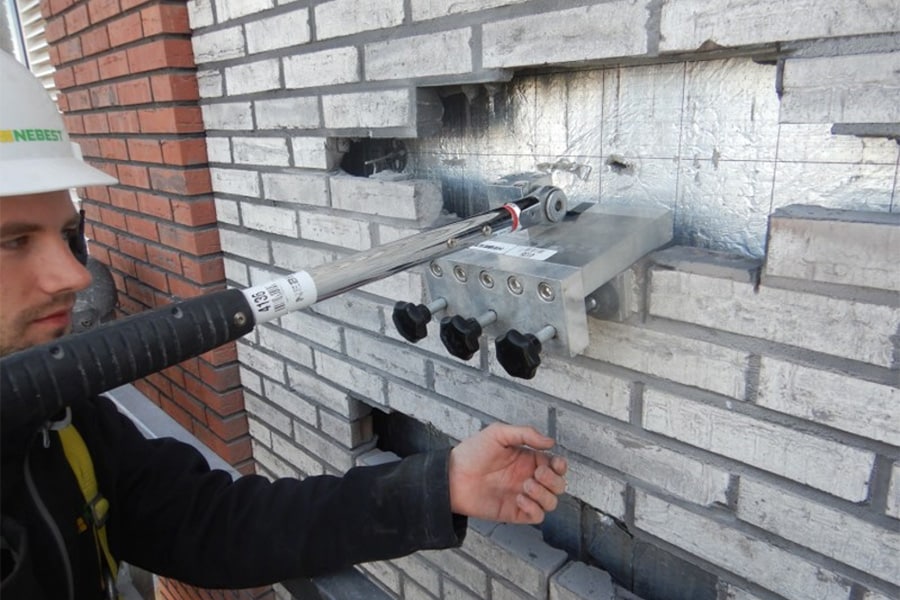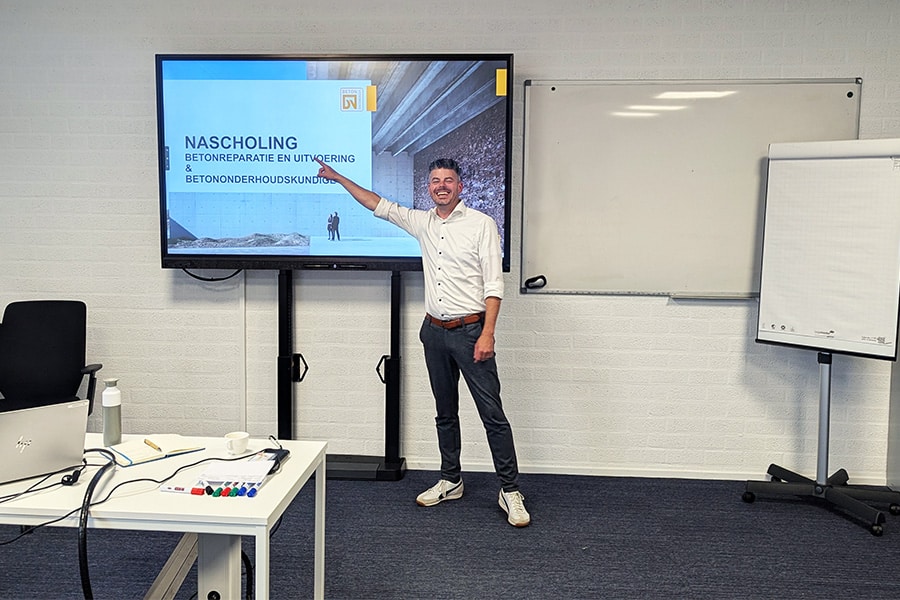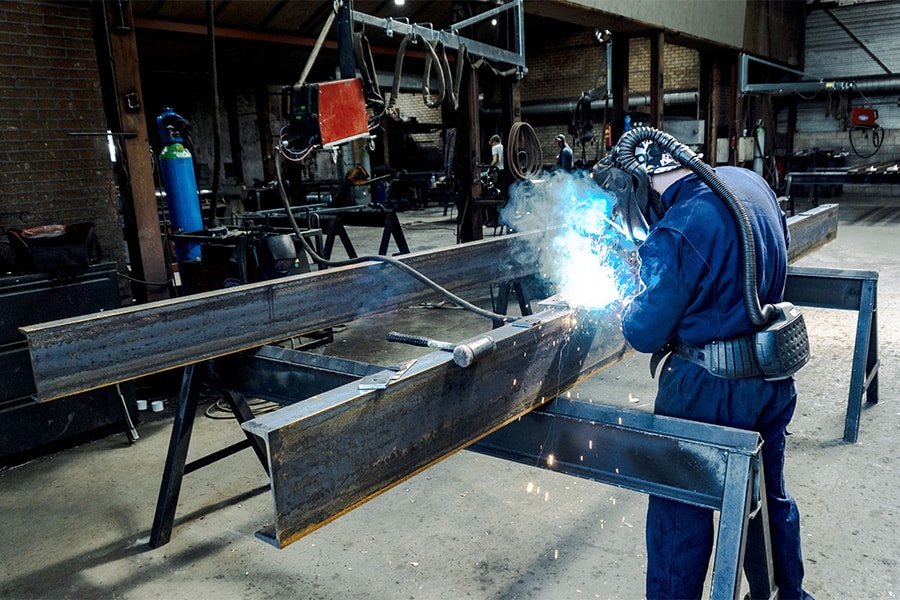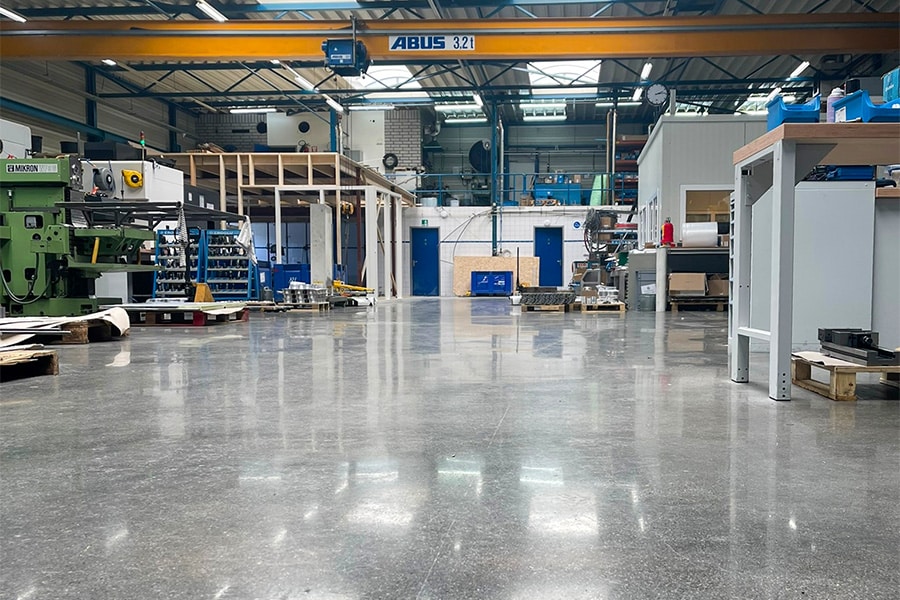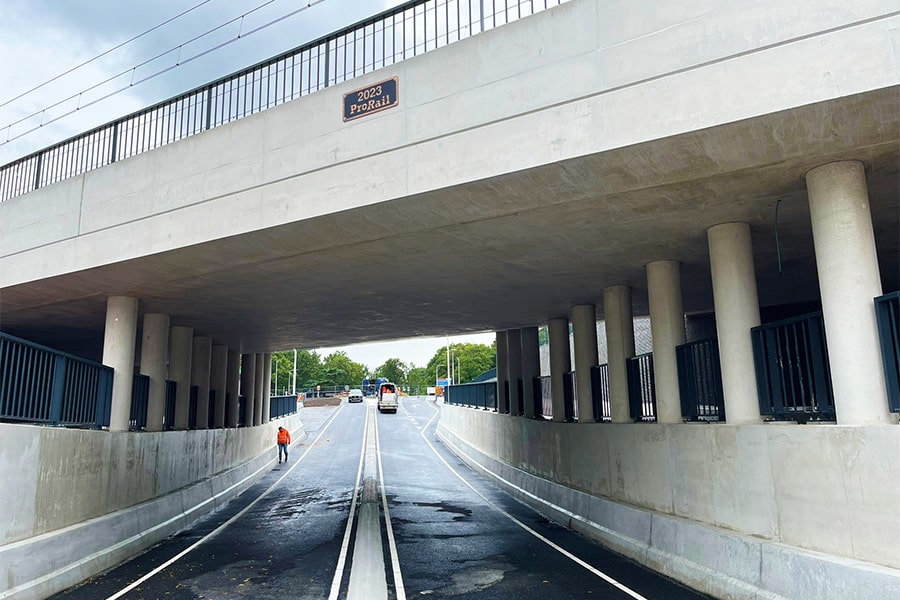
A new step in sustainable construction
Self-healing concrete in Rijen
Concrete that repairs itself sounds like a dream, but in Rijen that dream has become reality. In a wall of the pump station of the railroad underpass in the village in Brabant, an innovative application of self-healing concrete has been successfully put into practice. This project, carried out by contractor Heijmans, in cooperation with ABC Betonmortel and Basilisk, marks an important step in making concrete structures more sustainable.
The concept behind self-healing concrete is as ingenious as it is effective. The key lies in the addition of a special admixture developed by Delft-based Basilisk. This company, spawned from TU Delft, has developed a technology in which bacteria produce limestone and seal cracks in concrete. This keeps the concrete waterproof without the need for additional repairs.
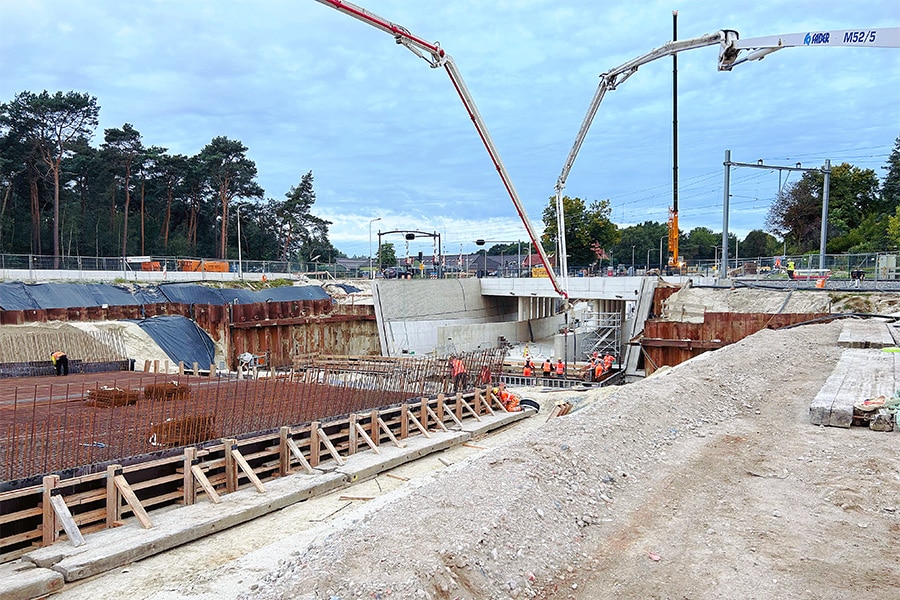
Less reinforcement, more durability
One of the major advantages of this innovative concrete is the reduction of reinforcement. Normally, additional reinforcement steel is used to reduce cracking and ensure watertightness. However, thanks to the concrete's self-healing properties, 35% less horizontal reinforcement could be used in Rijen. This resulted in a 10% lower environmental impact, an important step toward more sustainable construction. Jeroen van Oosten, concrete technology consultant at Heijmans, explains, "Sustainability is one of our spearheads. Concrete is one of the most widely used materials in construction, so it is crucial to make it more sustainable. With this project we are taking a concrete step towards circular concrete, something we strive for in all our projects."
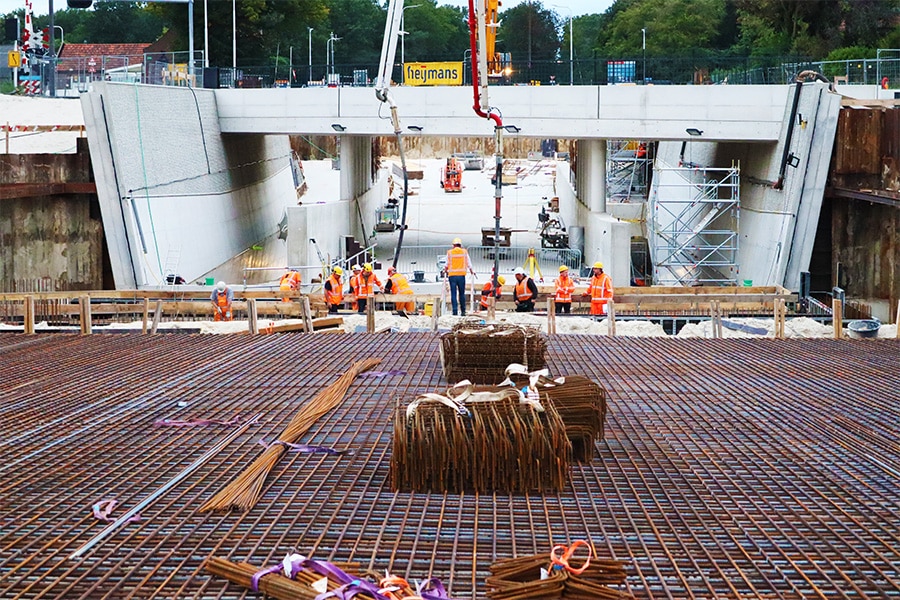
A broad collaboration
This project is a collaboration between different parties who all contribute to making the construction sector more sustainable. ProRail and the province of North Brabant played a crucial role as clients and were open to innovation. The contribution of TU Delft and independent research parties such as SGS Intron provided scientific substantiation and validation of the results. Marc Ottelé, researcher at TU Delft, emphasizes the importance of this integrated approach: "This project shows that sustainable construction is not only about material innovation, but also about collaboration throughout the chain. From design to implementation and monitoring, every aspect has been documented and analyzed."
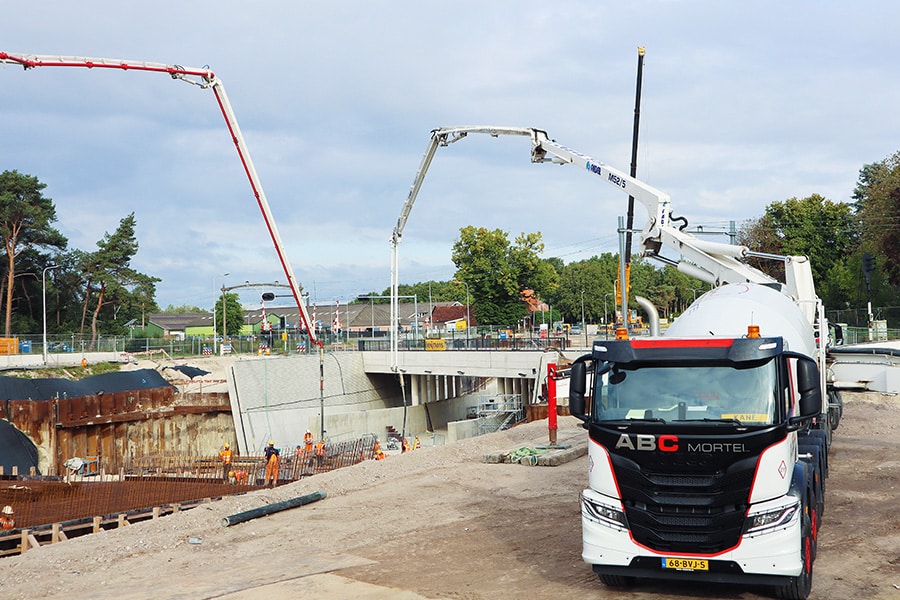
Testing in practice
For this project, one of the long walls of a pump cellar in the railroad underpass was constructed with self-healing concrete. This provided the ideal test environment to assess the effectiveness of the material. After pouring, four cracks of up to 0.2 millimeters were observed, exactly as expected. To test whether the bacteria did their job, the basement was flooded for six weeks. When the water was pumped out, visual inspections showed that the cracks had closed and there were no leaks. To further validate the results, drill samples were taken and examined by TU Delft. Initial findings confirmed that the self-healing concrete was actually functioning as intended.
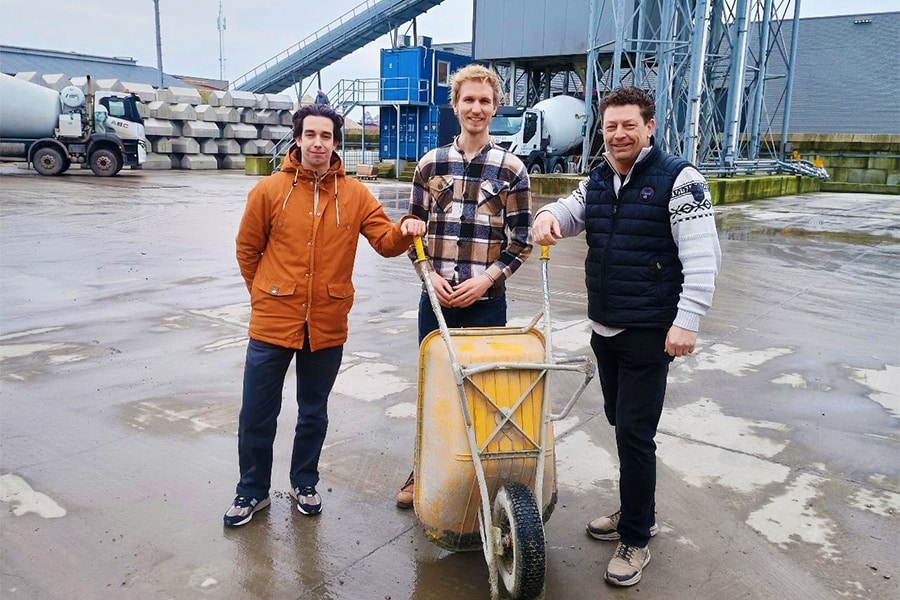
Monitoring and comparison
The project in Rijen is not only a test for self-healing concrete, but also an important scientific experiment. The railroad underpass was designed with a comparative test: one wall was traditionally reinforced, while the opposite wall was constructed with 35% less reinforcement. Over the next five years, Heijmans and ProRail will conduct annual inspections to compare the performance of the two solutions. According to Van Oosten, this approach is essential for the further development of sustainable construction techniques. "This project provides valuable insights into how we can make concrete structures more sustainable. The CO2 savings we realize with this is significant and can amount to 10% of the total emissions of a concrete construction."
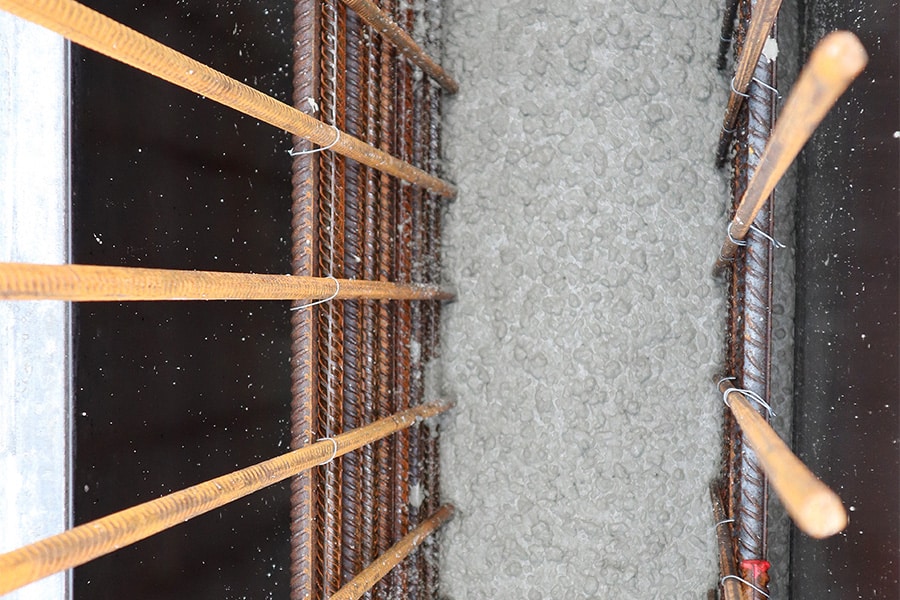
The future of self-healing concrete
The successful application in Rijen is an important step for self-healing concrete in the infrastructure sector. It is expected that this technology will be increasingly used in the future, both in new construction and renovation projects. Besides railroad underpasses and viaducts, self-healing concrete can also play a role in, for example, sewers, tunnels, parking garages and hydraulic structures. For Heijmans, this project is one of many pilots in the field of sustainable concrete. "We want to continue to innovate and test new technologies," says Van Oosten. "Self-healing concrete has the potential to become a standard solution in construction, and we are proud to play a pioneering role in this." With the growing focus on circularity and CO2 reduction in the construction industry, self-healing concrete can make an important contribution to a more sustainable future. The experience in Rijen proves that this technology not only works, but is a viable and effective solution to the challenges of the modern construction industry.
Further scaling up and research
Further scale-up and additional research will be required to implement self-healing concrete widely. TU Delft and Heijmans continue to work with partners to improve the technology and reduce costs. New test projects are being set up, including in housing construction and hydraulic engineering. An important aspect is cost-effectiveness. The current additional cost of self-healing concrete is still a barrier to large-scale application. However, because it requires less maintenance and repairs, the lifetime costs may be lower. In time, this makes it an attractive option for both governments and private investors.
Conclusion
The project in Rijen demonstrates that self-healing concrete is a feasible and effective solution for the future of sustainable construction. Cooperation between contractors, knowledge institutions and clients makes it possible to successfully put innovative technologies into practice. The coming years will show how big the impact of this development will be, but one thing is certain: self-healing concrete has the potential to fundamentally change the construction industry.
